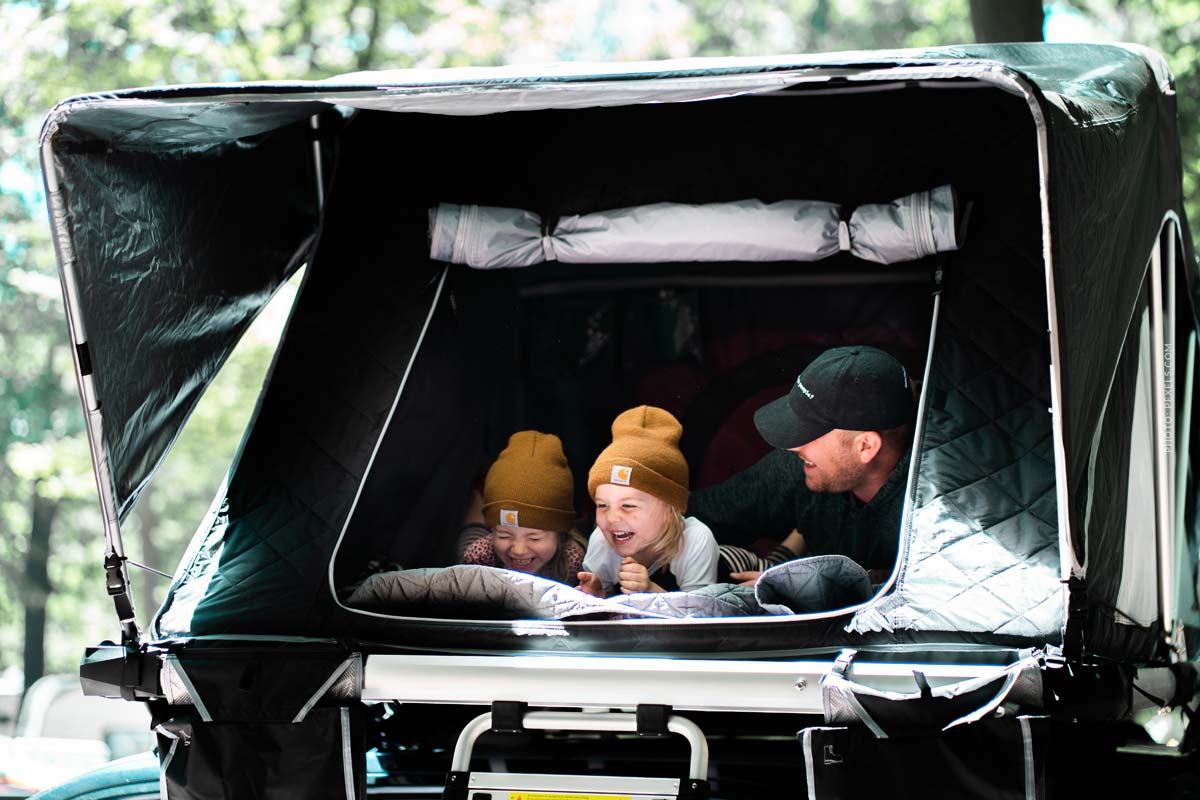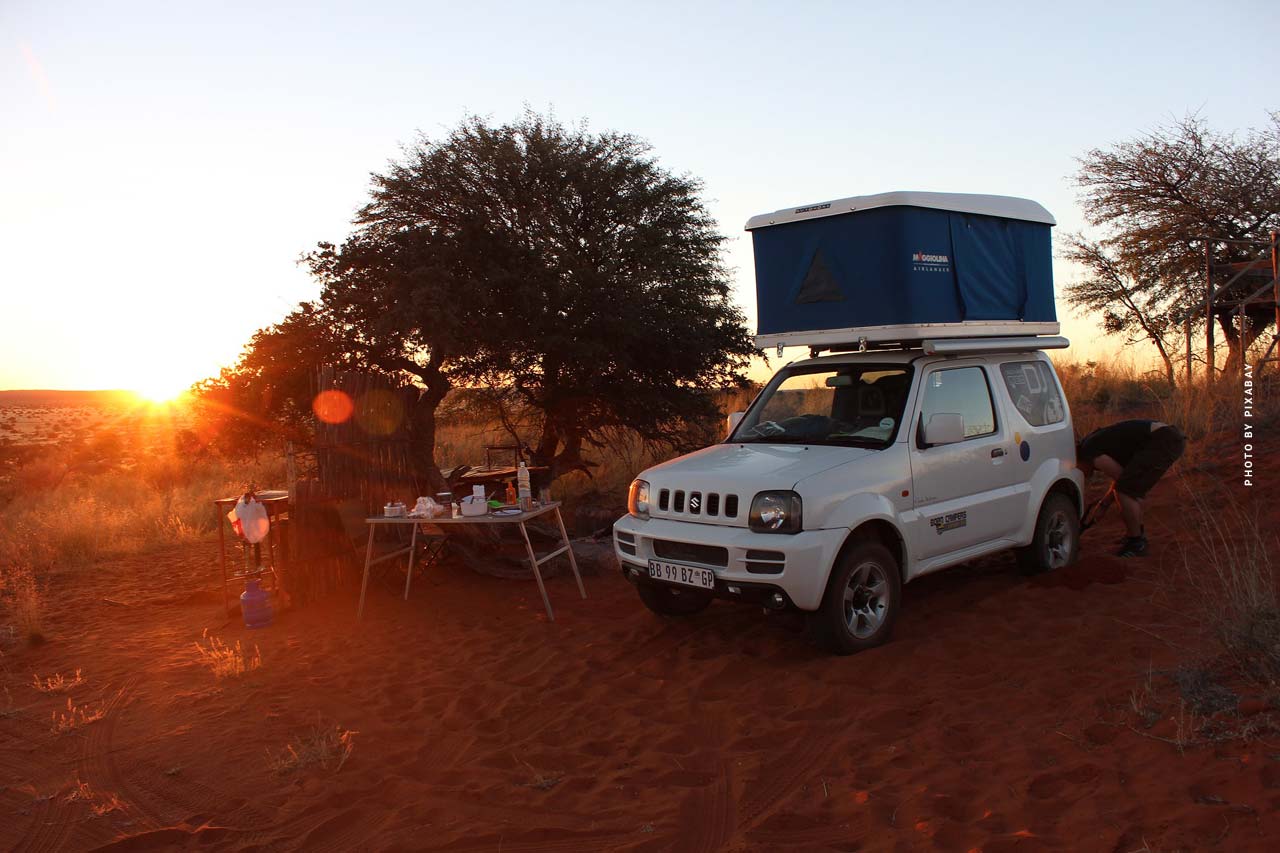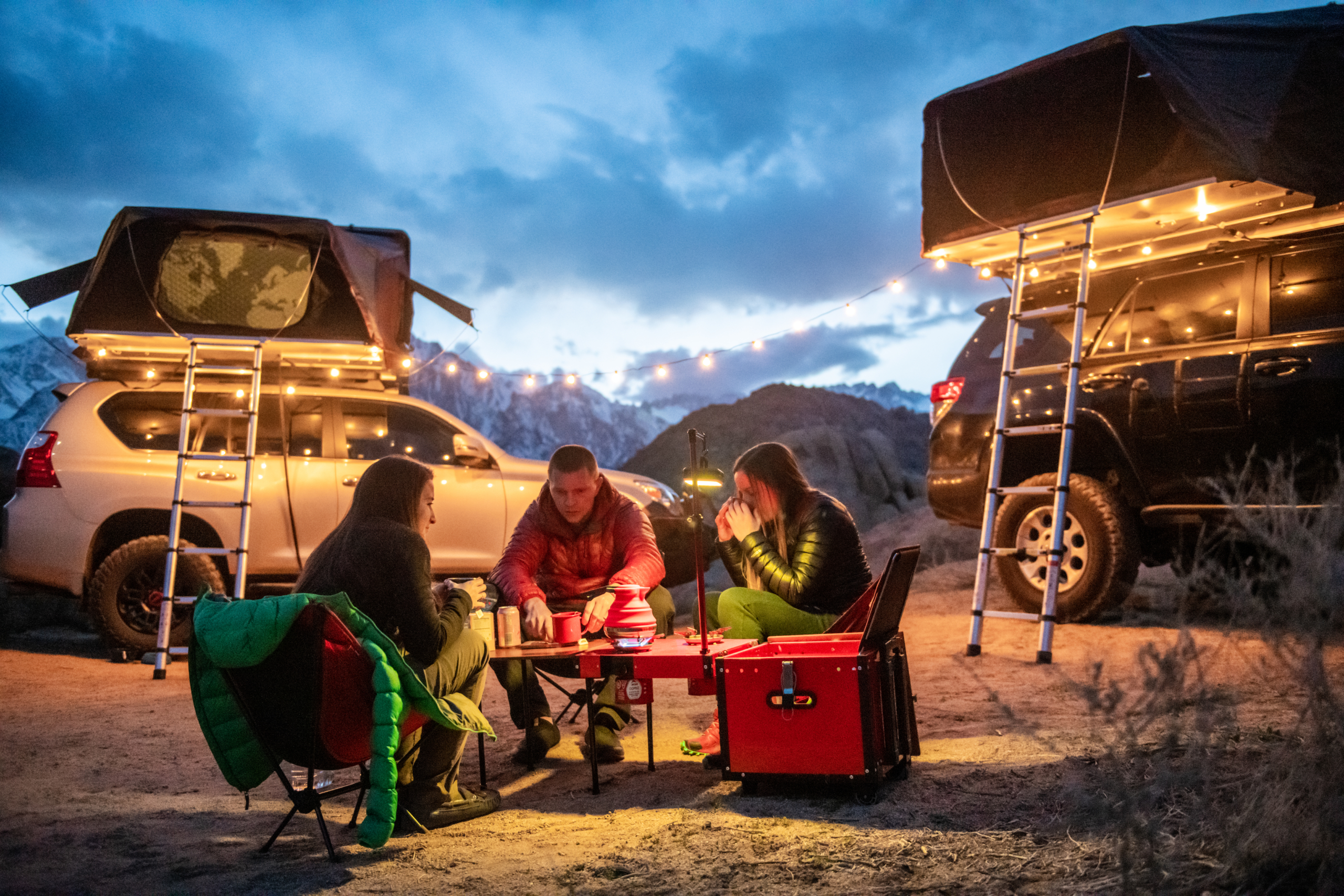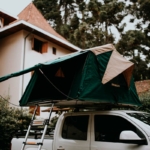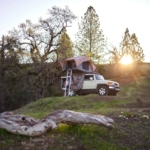Rooftop tent disadvantages & how to solve them: camping tips
Rooftop tent disadvantages – Imagine you are in the middle of nature, surrounded by the tranquillity of the forest or the mesmerizing sounds of the ocean. You’re lying under a twinkling starry sky, and the only thing separating you from the breathtaking surroundings is a compact roof tent on the roof of your car. Sounds tempting, doesn’t it? Camping with a rooftop tent undoubtedly offers a unique adventure, but as with all outdoor activities, there are some issues that can arise. Don’t worry, here we’ll highlight some of the most common drawbacks you might encounter when camping with a rooftop tent and provide you with practical tips and solutions.
Challenges & restrictions with a roof tent
The freedom of camping in a rooftop tent is undoubtedly tempting. A quick and uncomplicated set-up, the prospect of breathtaking places to spend the night and the opportunity to experience nature up close are just some of the reasons why more and more adventure-seekers are opting for a rooftop tent adventure.
Of course, camping with a roof tent also has many advantages, which you can read about here:
However, as with everything in life, there are also some disadvantages and limitations to consider. You can get an even better overview directly from the source: Rooftop tent disadvantages (Campwerk).
Expensive abolition: why it’s still worth it
You may have to dig a little deeper into your pockets at the beginning. Rooftop tents are often a little more expensive than conventional tents. This is because they are specially built and made of high-quality materials. But don’t worry, it pays off! Rooftop tents are still cheaper than most caravans and motorhomes and can be used for many camping adventures to come thanks to their robustness and durability. After all, you’ll save yourself the expense of other accommodation when you’re on the road because you’re equipped with a roof tent.
Here are a few important things regarding the costs:
- Purchase price more expensive, but cheaper than caravan/mobile home
- Investment pays off in the long term, as no more hotel costs
Pay attention to the fuel: additional weight
Of course, the additional weight on the car roof can also increase your fuel consumption. Your driving behavior can also be affected by the additional weight. However, it is fair to say that this does not come close to the fuel consumption of a caravan or motorhome. In comparison, the roof tent is lighter and puts less strain on your car. There is also a maximum speed limit for some roof tents. You should definitely adhere to this to prevent accidents and save fuel.
Other disadvantages are:
- Increased fuel consumption, but less than a motorhome
- Speed limit, but fewer accidents & fuel consumption
Unsafe during storms & thunderstorms: Watch out for lightning!
Most rooftop tents can withstand rain and wind, but in the event of a heavy storm or thunderstorm, it is better to stay in the car or drive to the nearest hotel. Of course, this also means costs, but on average it is still cheaper than staying in a hotel for your entire vacation. A roof tent does not have a closed metal construction like a car. In addition, it is in an elevated position due to its place on the car roof. This can quickly make lightning strikes dangerous. However, you can simply sit in the car during thunderstorms with lightning.
Pofi tip: Always check the weather forecast so that you can plan accordingly.
You should pay attention to this in bad weather:
- Less stability during storms – solve with: one night in a hotel
- Do not set up in case of lightning – solve with: wait out thunderstorms in the car
During thunderstorms you can wait in the car and then set up the roof tent again!
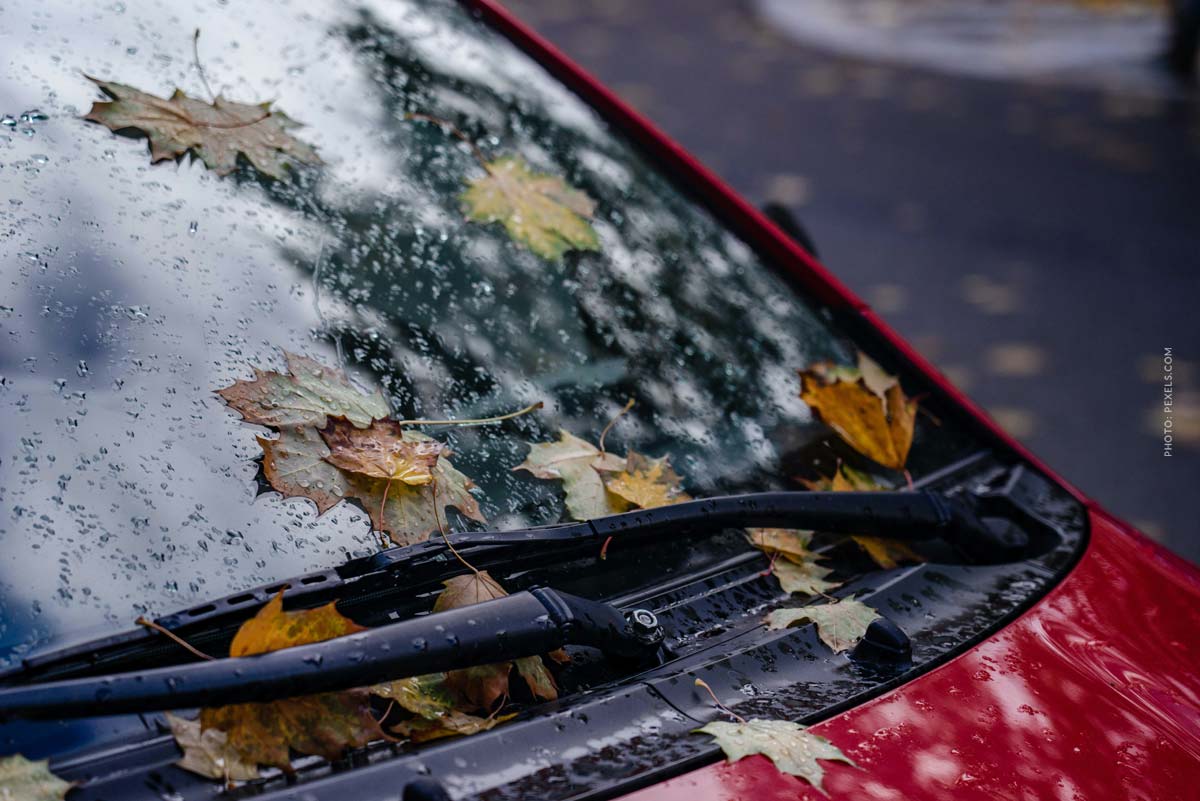
No space for heavy furniture, such as cupboards
A rooftop tent is one of the most space-saving options for a vacation in the great outdoors. But due to its more compact size, the space in a roof tent is not comparable to the living space in a fully equipped caravan or motorhome. And of course you can’t permanently install furniture, you have to reassemble it every time. On the other hand, a roof tent is of course much lighter and cheaper, and you often have more sleeping space compared to a conventional tent.
You have these disadvantages due to the space in the roof tent:
- Less living space than in a caravan, but more sleeping space than in a conventional tent
- Less space for permanently installed furniture, but the roof tent is therefore also significantly lighter
Tip: With the right camping accessories, you can also stow everything important in the roof tent to save space!
Fold in the roof tent: then drive on!
And while you can easily drive from destination to destination, your car is still not 100% freely available. Once you’ve unfolded the tent in the evening, you still have to fold it up to drive to the supermarket. However, most models are designed for quick assembly and disassembly, so this should be quick and you can still buy your well-earned snack for dinner.
Short & sweet:
- Roof tent must always be dismantled first, but with a little practice it can be done very quickly
Rooftop tent manufacturer: Our recommendation
We’ve just told you a lot about the disadvantages, but perhaps we’ve been able to pique your curiosity with the solution to these disadvantages. If you would like to know more about roof tents, you can find many different models with different functions in this article:
Rooftop tent comparison: the best rooftop tent?
To make sure you find the right roof tent for your needs and have fewer disadvantages, you can find our shopping recommendations here:
Problems can be solved – and then everyone is quickly happy again!
